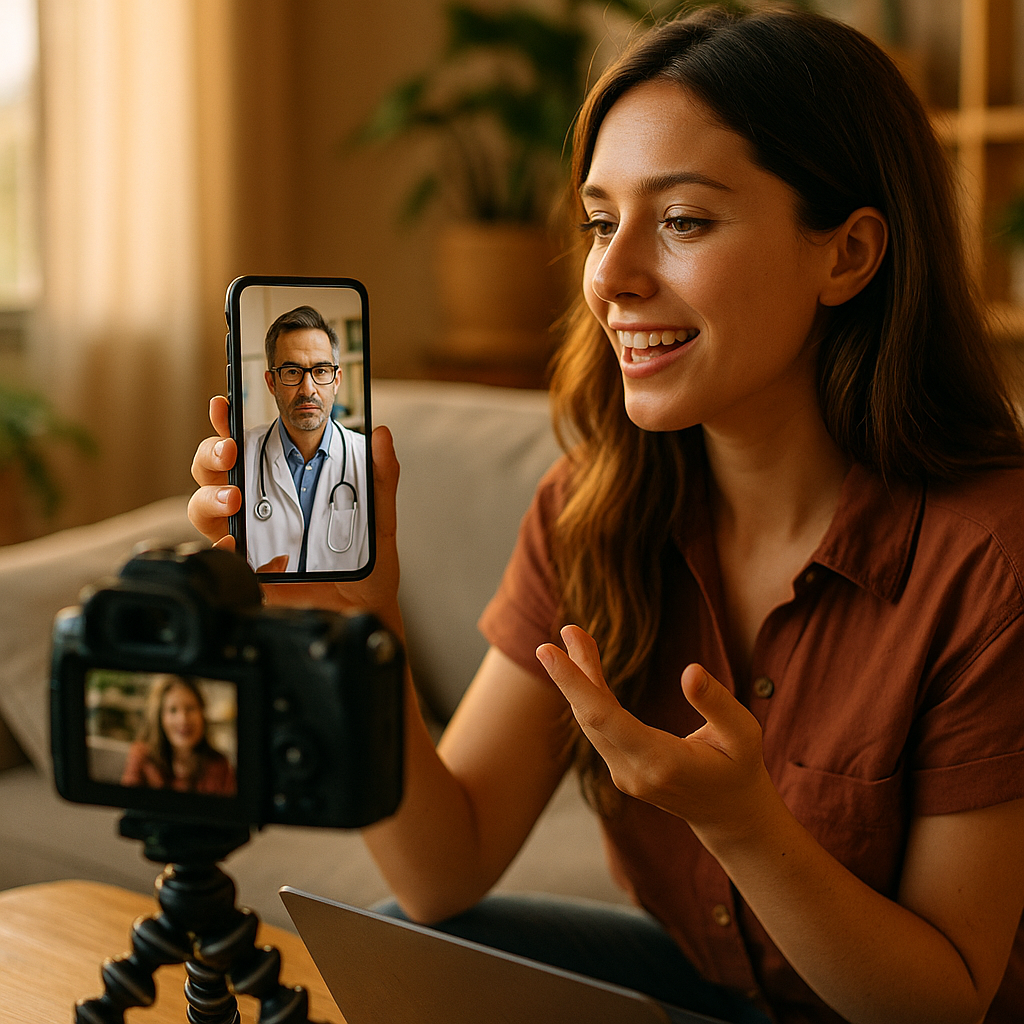In this case study, we examine how a leading healthcare provider harnessed influencers to promote its telehealth services, achieving significant results in patient acquisition and engagement. As telemedicine transforms healthcare access in 2025, understanding influencer marketing’s impact in this sector can shape your strategy. Ready to see what worked—and what you can learn for your practice?
Identifying the Right Influencers for Healthcare Outreach
Choosing influencers in the healthcare sector demands careful vetting. The provider prioritized healthcare outreach by identifying influencers who combined credibility with relatability. Their selection process focused on:
- Medical professionals: Doctors, nurses, and therapists active on social media, who could offer clinical perspective and trust.
- Patient advocates: Individuals living with chronic conditions, who could authentically share their telehealth experiences.
- Fitness and wellness creators: Influencers who focused on preventive care, lifestyle adjustments, and mental health, resonating with target patients.
Every influencer’s digital footprint was screened for accuracy, professionalism, and past collaborations. Only those who routinely provided fact-checked, honest content were invited. This vetting aligned with Google’s EEAT (Experience, Expertise, Authoritativeness, Trustworthiness) criteria—crucial in a regulated industry.
Crafting a Compelling Influencer Campaign for Telemedicine Awareness
To build telemedicine awareness, the campaign prioritized clear messaging and patient-centric storytelling. Influencers were briefed with data on telehealth’s convenience, security, and scope of services offered by the provider. Collaborative content ideas included:
- Personal video diaries documenting their first telehealth consultations.
- Q&A sessions with healthcare professionals, addressing followers’ real-time concerns about virtual care.
- Short-form educational reels on when telehealth is appropriate, how to book appointments, and insurance compatibilities.
- Instagram and TikTok stories spotlighting the provider’s digital interface, privacy safeguards, and multilingual accessibility.
Clear guidelines ensured influencers disclosed partnerships transparently to maintain audience trust. All medical information shared was reviewed by the provider’s compliance team to ensure accuracy and adherence to current legal and ethical standards.
Measuring Influencer Campaign Performance in Digital Health Marketing
Effective digital health marketing requires rigorous performance tracking. The healthcare provider established clear KPIs before campaign launch:
- Number of new telehealth patient registrations directly traceable to influencer content.
- Engagement rates (comments, shares, likes, saves) across posts, stories, and videos.
- Traffic volume to the telehealth landing page, using unique tracking links for each influencer.
- Sentiment analysis—monitoring positive versus negative feedback about telemedicine in comments and direct messages.
Within three months, the campaign generated a 280% increase in telehealth appointment sign-ups over baseline figures (Q1 2025). Influencer posts garnered a combined reach of 3.2 million, with a 22% engagement rate—well above the typical benchmark for healthcare content.
Notably, positive sentiment regarding telehealth rose by 40%, with follower feedback citing improved convenience, reduced anxiety about in-person visits, and ease of use for busy families. These metrics provided the provider with actionable data to further refine its digital health marketing approach.
Addressing Patient Privacy and Trust in Influencer Healthcare Campaigns
Maintaining patient privacy and trust was central to campaign success. In a post-pandemic world where consumers are both tech-savvy and privacy-conscious, the healthcare provider:
- Required disclosure of influencer relationships to comply with both legal and ethical norms.
- Prohibited sharing of any individual health data without explicit, documented patient consent.
- Educated influencers on HIPAA-equivalent compliance and digital safety best practices.
- Supplied talking points to dispel common myths about telehealth privacy (e.g., secure end-to-end encryption, data access controls).
The provider also hosted weekly FAQ sessions featuring clinical staff and compliance officers, which influencers could join or invite their followers to attend virtually. This transparency reinforced trust and encouraged users previously skeptical about sharing their health information online to try the telehealth platform.
Lessons Learned: Influencer Impact on Telehealth Service Adoption
The provider’s influencer-led strategy brought valuable influencer impact insights for others considering similar campaigns:
- Authenticity is non-negotiable. Audiences quickly detect scripted or forced promotional content, especially in healthcare. The most successful posts were those where influencers shared genuine anecdotes, including initial skepticism, and highlighted specific benefits after real use.
- Diversity broadens reach. By working with a range of influencers—regarding age, ethnicity, language, and health background—the provider made its telehealth services more relatable and inclusive, capturing new patient demographics.
- Continuous education converts. Many potential users hesitated out of uncertainty or misinformation; regular myth-busting, transparent Q&As, and behind-the-scenes demonstrations reassured and educated skeptical segments.
- Compliance must be proactive. Regular content reviews, ongoing influencer training, and open forums for user queries minimized misinformation risks and built trust.
The outcome: sustained growth in telehealth adoption, positive word-of-mouth across digital channels, and improved patient satisfaction scores.
Conclusion: Key Takeaways from a Healthcare Influencer Case Study
This case study demonstrates that a carefully planned influencer-led campaign can unlock widespread telehealth adoption in 2025. By focusing on trust, authenticity, and compliance, healthcare providers can leverage influential voices to educate and convert new users, paving the way for a more accessible, digital-first care future. Consider these strategies for your organization’s next digital health campaign.
FAQs: Influencer Marketing for Telehealth Services
-
What types of influencers work best for healthcare campaigns?
Medical professionals, patient advocates, and wellness creators with demonstrated expertise and strong ethical standards are ideal. Their audiences trust them for accurate, honest health advice. -
How do you measure the effectiveness of an influencer campaign in healthcare?
Key metrics include patient registrations, content engagement rates, traffic driven to key web pages, and positive sentiment in user feedback. -
Is it safe and ethical for influencers to promote telehealth services?
Yes, as long as influencers adhere to disclosure regulations, respect patient privacy, and only share medically accurate, pre-approved information. -
Do influencer campaigns really change patient behavior?
Real-world case studies—like this one—show influencer advocacy can shift perceptions and increase trial and repeat use of telehealth services, especially when combined with educational content. -
How can healthcare brands avoid compliance issues with influencers?
Create clear content guidelines, train influencers thoroughly, review posts before publication, and ensure all promotions comply with industry regulations and standards for accuracy and privacy.
